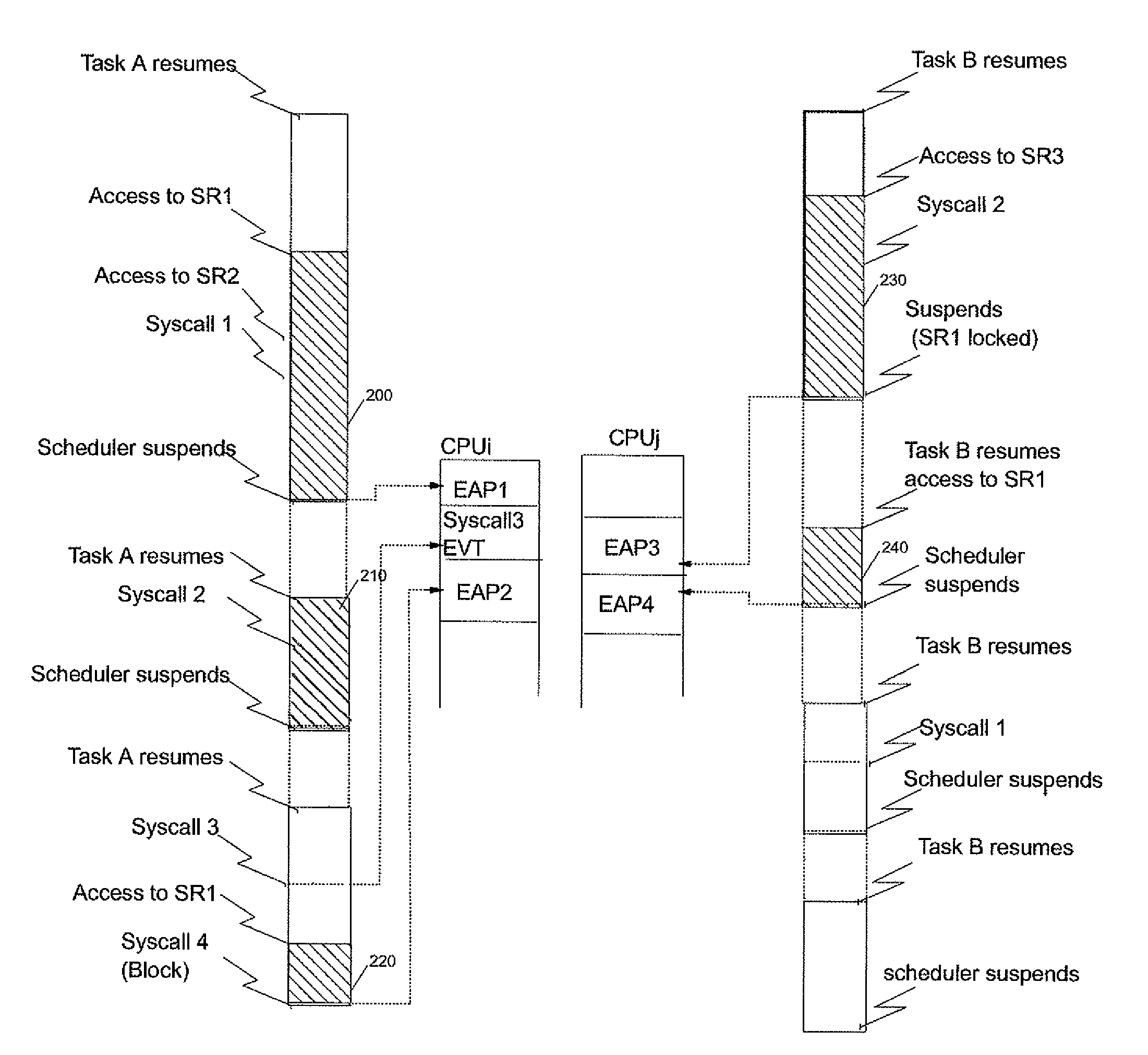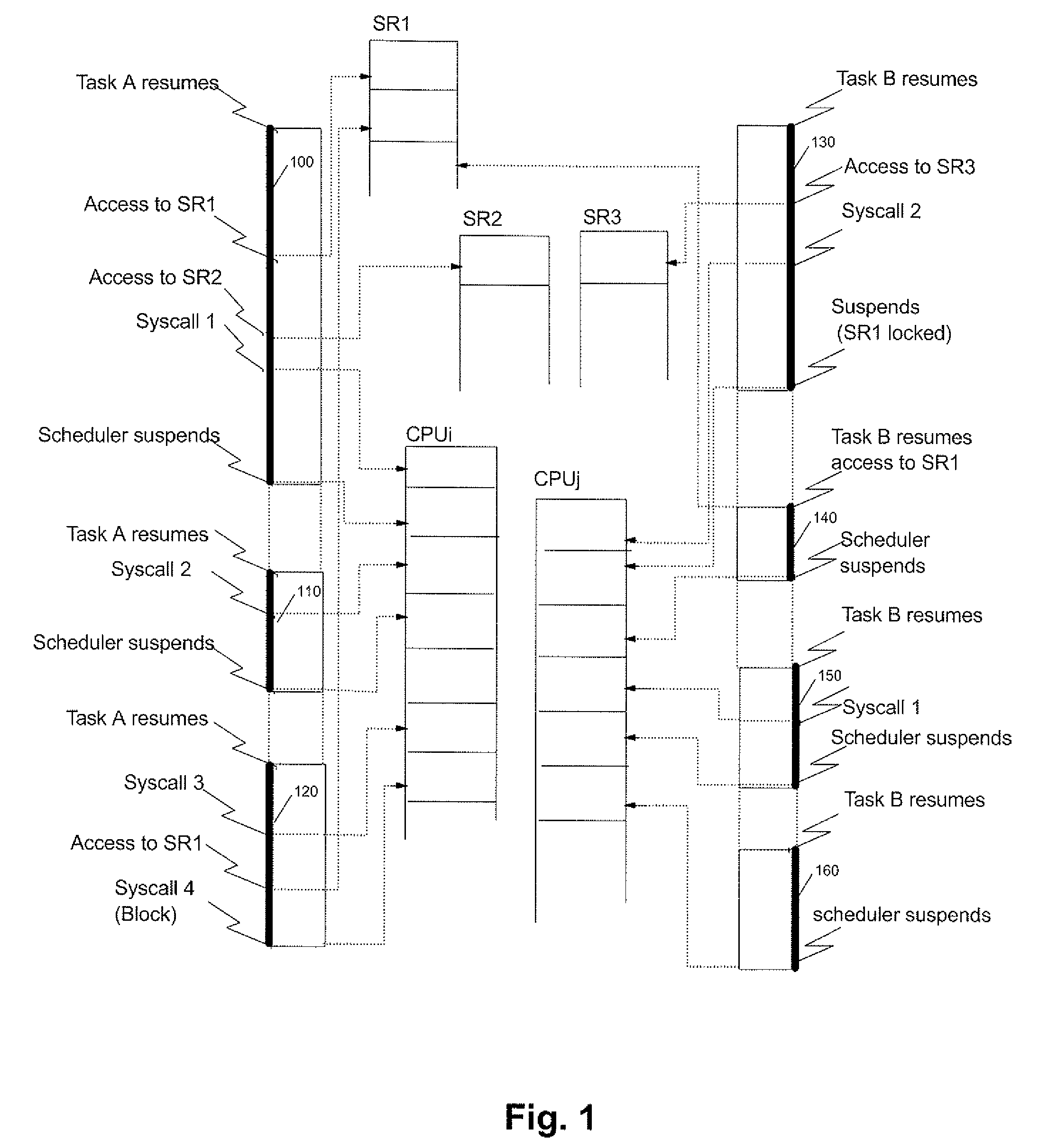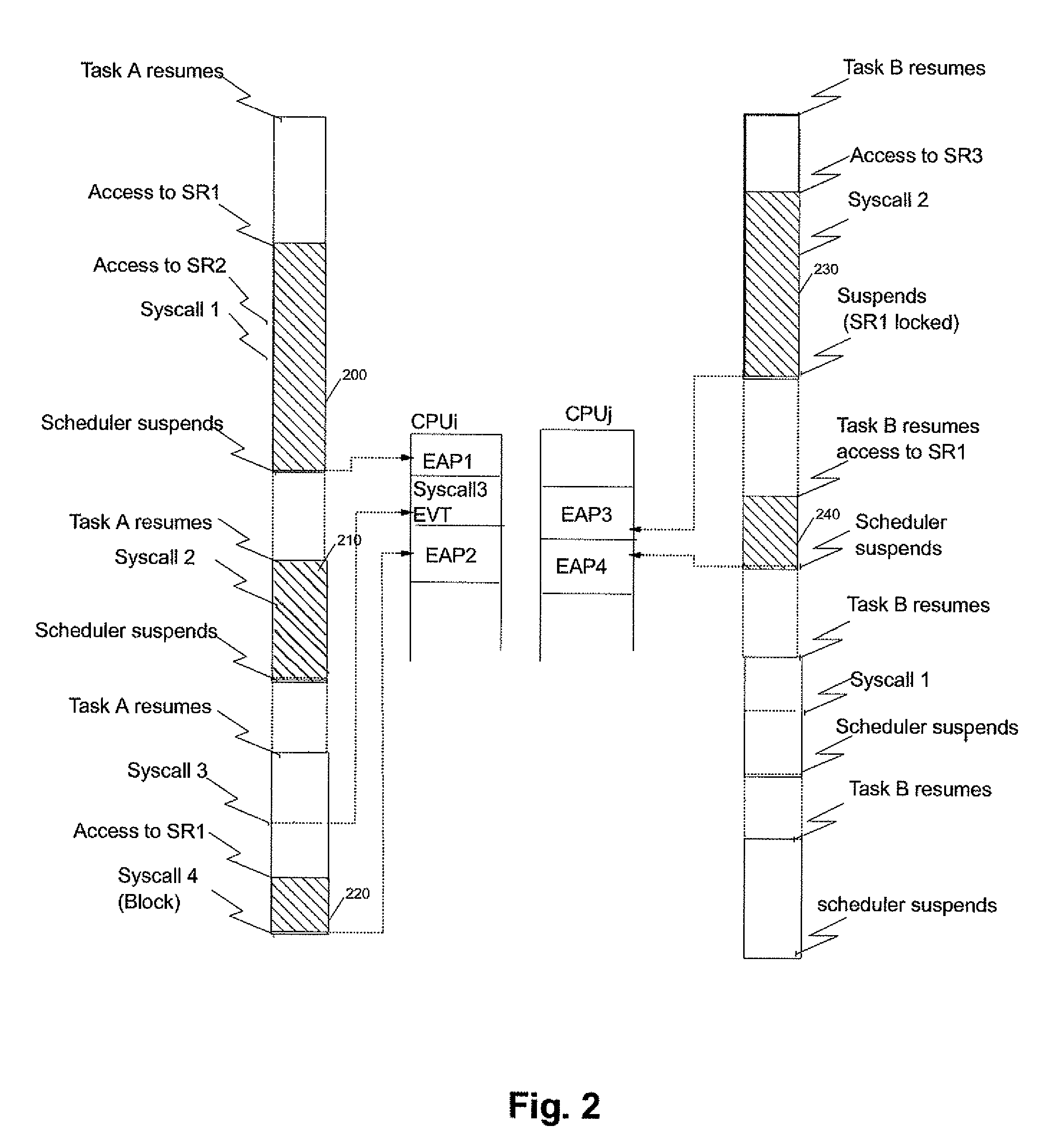Method, system and computer program to optimize deterministic event record and replay
a technology of deterministic event record and replay, applied in the field of performing record and replay of applications, can solve the problems of unexpected shared resource access, system call interrupt, replay session divergence, etc., and achieve the effect of simplifying the architectur
- Summary
- Abstract
- Description
- Claims
- Application Information
AI Technical Summary
Benefits of technology
Problems solved by technology
Method used
Image
Examples
Embodiment Construction
[0022]FIG. 1 illustrates the record process with the method of the prior art. As illustrated in (FIG. 9) the international patent application WO 2006 / 077260 of the prior art, during the recording session of tasks executing on a multiprocessor system, fifo queues are used to store event information. One fifo queue per each CPU (QJIProX, QJIProY) is used for logging each task schedule period information event and one fifo queue per shared resource (QJhMPi) is used for recording each exclusive access to that shared resource during task execution. FIG. 1 illustrates on one example the frequency of logging in the per CPU and per shared resource queues.
[0023]In this example of a recording session, an application of 2 processes A and B run on a multi-processor machine, composed of processors CPUi and CPUj. A and B use shared resources SR1, SR2, SR3 (for example, 3 distinct shared memory pages). On CPUi, a first scheduling period (100) starts when task A resumes and ends when the scheduler ...
PUM
 Login to View More
Login to View More Abstract
Description
Claims
Application Information
 Login to View More
Login to View More - R&D
- Intellectual Property
- Life Sciences
- Materials
- Tech Scout
- Unparalleled Data Quality
- Higher Quality Content
- 60% Fewer Hallucinations
Browse by: Latest US Patents, China's latest patents, Technical Efficacy Thesaurus, Application Domain, Technology Topic, Popular Technical Reports.
© 2025 PatSnap. All rights reserved.Legal|Privacy policy|Modern Slavery Act Transparency Statement|Sitemap|About US| Contact US: help@patsnap.com



